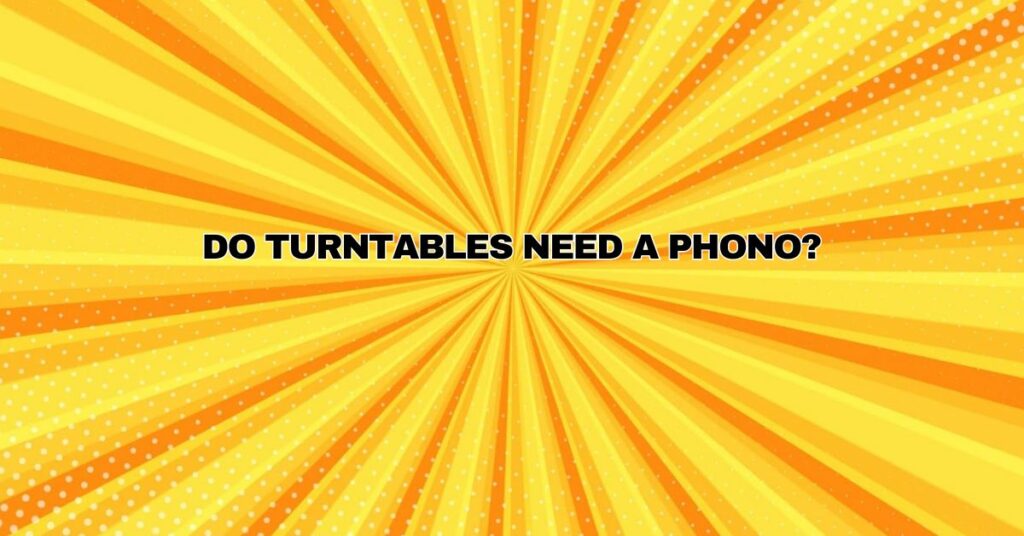Turntables, with their iconic spinning platters and the captivating charm of vinyl records, have made a significant resurgence in recent years. For audiophiles and music enthusiasts, there’s something uniquely alluring about the warm and authentic sound of vinyl. However, in the world of vinyl playback, there’s a crucial piece of the puzzle that often goes overlooked but is, in fact, indispensable – the phono preamp. In this comprehensive article, we’ll explore the critical role of a phono preamp, examine why turntables need one, and discuss its significance in delivering the beautiful sounds of vinyl.
Understanding the Phono Preamp
A phono preamp, also known as a phono stage or preamplifier, is a dedicated electronic component designed to perform a crucial task – amplifying and equalizing the audio signal produced by a phono cartridge. To appreciate its significance, it’s essential to grasp the intricacies of vinyl records and the unique challenges they present.
Challenges Presented by Vinyl Records
Vinyl records store music in analog form. When a stylus (the needle on a turntable’s tonearm) traces the grooves on a vinyl record, it generates an electrical signal that’s exceptionally weak. This signal is a direct representation of the recorded audio, but it’s at a significantly lower amplitude than what modern amplifiers and audio equipment are designed to work with.
Additionally, vinyl records are cut with a particular equalization curve, known as the RIAA (Recording Industry Association of America) curve. This curve is applied during the mastering and cutting process to optimize the sound quality and reduce noise and distortion. However, it means that when playing back vinyl records, you need to reverse this equalization curve to get the original, flat frequency response.
The Role of the Phono Preamp
Here’s why a phono preamp is essential for turntables:
- Amplification: The primary function of a phono preamp is to boost the weak electrical signal produced by the phono cartridge. This amplification step is crucial to bring the signal to a level that can be effectively processed by an amplifier or receiver.
- Equalization: The phono preamp also applies the inverse of the RIAA equalization curve. By doing so, it restores the frequency response to its original, flat state, ensuring that the music sounds as intended by the recording artist.
- Noise Reduction: Vinyl records are prone to various forms of noise, including hiss and pops. A well-designed phono preamp can help reduce these unwanted artifacts, enhancing the listening experience.
Types of Phono Preamps
Phono preamps come in various forms, and their choice depends on your specific setup and preferences:
- Standalone Phono Preamps: These are separate components that you connect between your turntable and an amplifier or receiver. They offer flexibility and often provide high-quality sound.
- Integrated Phono Preamps: Some amplifiers and receivers come with a built-in phono preamp. This simplifies the setup process but may not offer the same level of customization as standalone options.
- Phono Preamp Cartridges: Some turntable cartridges, especially moving magnet (MM) cartridges, have a built-in phono preamp. These are convenient and can be an excellent choice for compact setups.
Significance of the Phono Preamp
The phono preamp is a critical link in the chain of vinyl playback, ensuring that the weak electrical signal generated by the phono cartridge is transformed into the rich, warm, and authentic sound that vinyl enthusiasts cherish. Its importance can be summarized as follows:
- Amplification: The phono preamp amplifies the weak signal from the phono cartridge to a level suitable for amplifiers and speakers.
- Equalization: It restores the original, flat frequency response of vinyl records by applying the RIAA equalization curve in reverse.
- Noise Reduction: A good phono preamp can help reduce noise and improve the signal-to-noise ratio, resulting in a cleaner and more enjoyable listening experience.
Conclusion
In the world of vinyl playback, the phono preamp is the unsung hero, ensuring that the beautiful sounds etched into vinyl records are faithfully reproduced. Turntables indeed need a phono preamp to overcome the unique challenges posed by analog records. Whether you’re a seasoned audiophile or a newcomer to the world of vinyl, understanding the significance of a phono preamp is key to fully appreciating the timeless charm and authentic sound of vinyl records.


